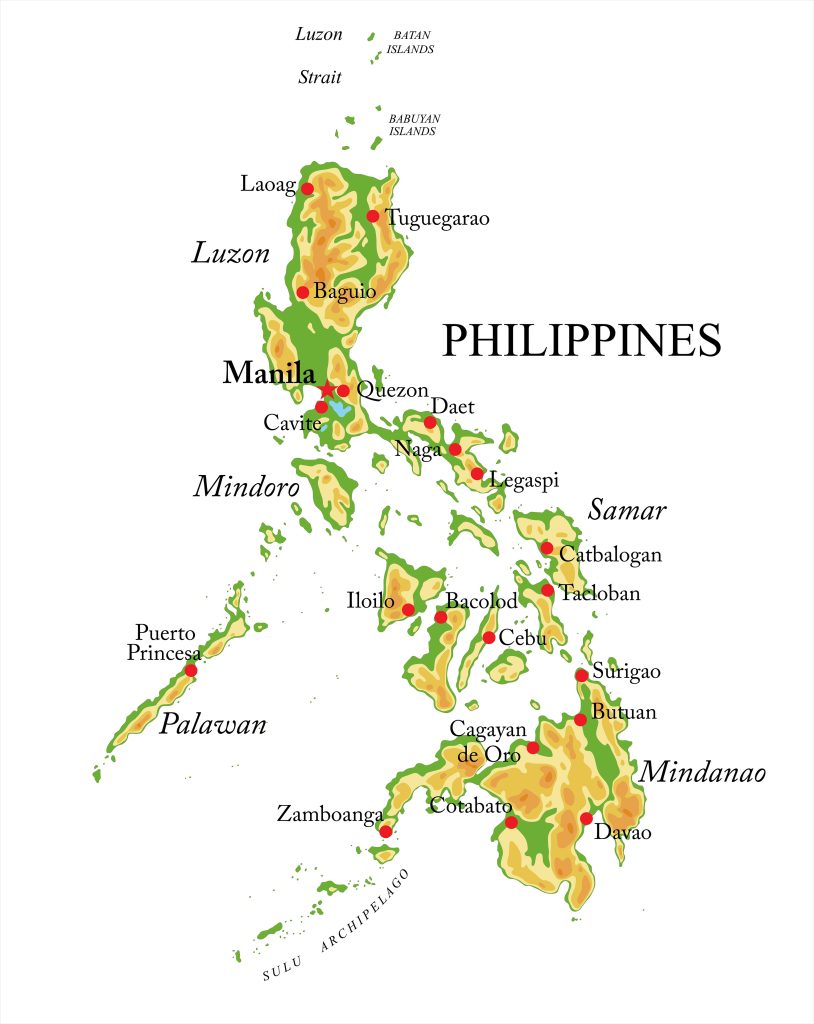Today, Filipino is the official national language of the Philippines, but it was not always that way. This month let’s learn about Tagalog, another major language in the island nation of the Philippines. First, a break-down of the name so that we can understand where it comes from:
Taga means “from”
Ilog means “river”
Therefore, when you put it together it becomes Taga-Ilog meaning “from the river” or river dwellers. This eventually became the name of the language as it was spoken by those who lived by the rivers.

Before the 1930s there was no national language of the Philipines. English and Spanish were considered official languages, but they were not national. In 1937 the Filipino government declared Tagalog the national language. This was controversial because the language was only spoken in the central and southern regions of Luzon, which is the northern region of the Philippines. People in the far north of Luzon and the southern regions didn’t speak it and therefore did not support or recognize it as the national language. The reason the government chose Tagalog is because it was spoken in Manila and its surrounding areas, which is where the government was located.
Some of the reasons to choose Tagalog were first that it did not have nearly as many dialects as other languages in the Philipines at the time and second, there was already an extensive amount of historical documents and books written in Tagalog. Therefore it was already well established. Lastly, it was chosen because it was the most widely understood language throughout the Philipines even though many did not speak it fluently.
This was until 1987 when Filipino was declared the national language. Filipino comes from Tagalog but has a lot of loan words from various languages such as Spanish and English. The main difference is that Filipino is largely Tagalog with a lot of loan words.
Filipino gets its influence from Spain because of its 300-year occupancy in the country.
Examples:
Tagalog – Spanish – English
kabayo – caballo – horse
radyo – radio – radio
kutsara – cuchara – spoon
tinidor – tenedor – fork
Also, China because many people from the south of China immigrated between the 16th and 19th centuries. Chinese immigrants also heavily influenced Filipino cuisine and culture with the ideas of feng shui.
Examples:
Tagalog – English
hikaw – earrings
susi – key
ate – older sister
kuya – older brother
There were also influences from the United States and Japan due to their occupations in the early 1900s.
Examples:
Tagalog – English
wais – wise
bolpen – pen
nars – nurse
drayber – driver
Examples:
Tagalog – Japanese – English
karaoke – カラオケ – karaoke
katol – 蚊取 り- incense to repel mosquitoes
tsunami – 津波 – tsunami
Tagalog purists, those who speak Tagalog and are not supportive of loan words or Filipino, would use other words than those above. They would use words from pre-colonial times. For example, instead of the borrowed general word for horse kabayo they would use the word for a female horse meyr.
While Tagalog is a language in the Philippines, there are speakers around the world on every continent. There was even a Filipino researcher who spoke Tagalog in Antarctica. In total, 47.3 million people around the world speak Tagalog as a native language.
Learn more about the written languages in the Philippines through our speaker on Two Efforts to Revive the Ancient Filipino Script – Calligraphic Art and Language Teaching here.
For more information:
https://www.worlddata.info/languages/tagalog.php

